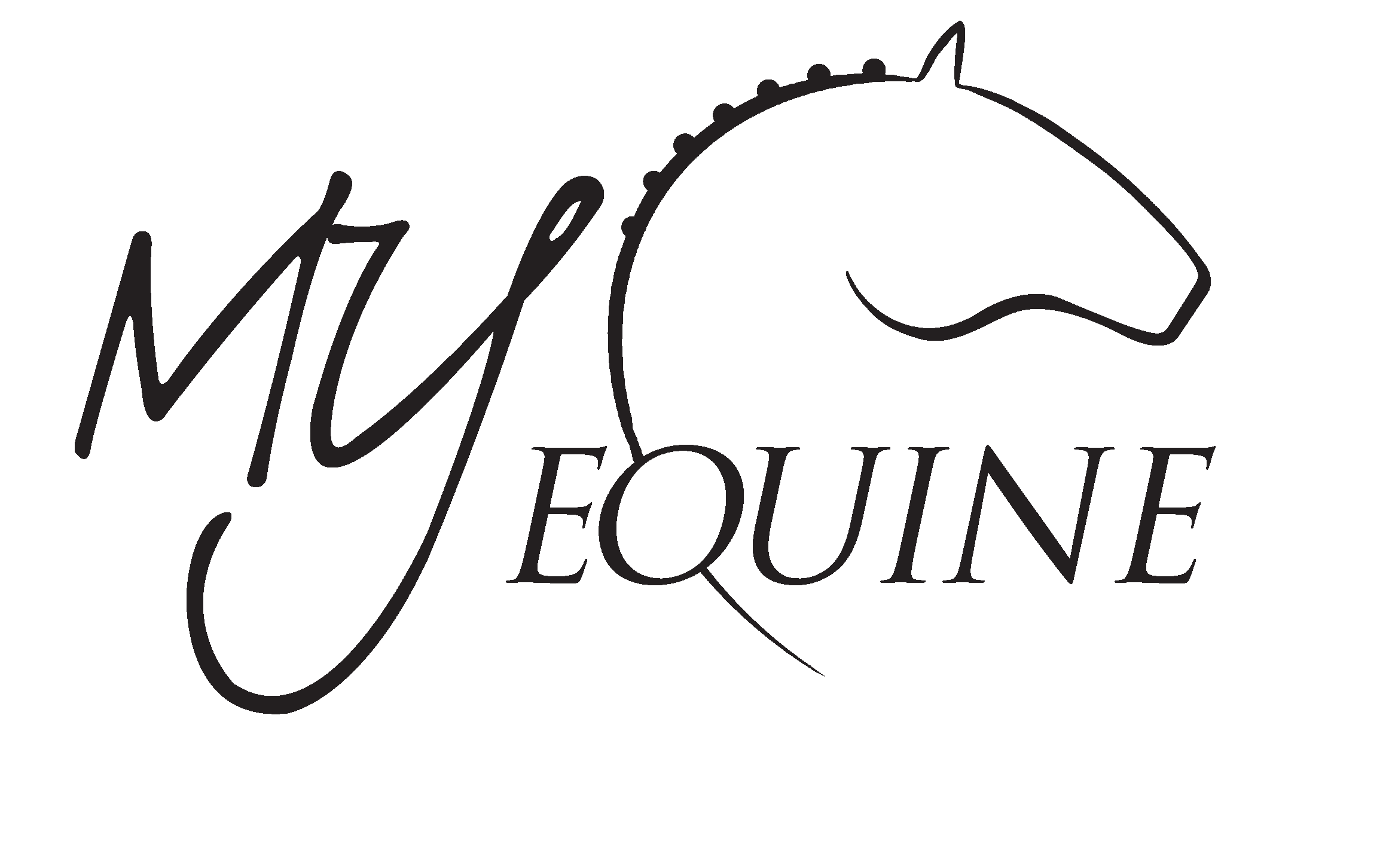Depending on our horse’s needs, a combination of exercises to improve mobility, core stability, balance and strength can be a useful addition to ridden exercises or as part of a maintenance or rehabilitation programme.
I find a good mixture of mobilising, lateral bending, balance and strengthening exercises provide a good all round routine for general health and maintenance, and can form part of your daily care / grooming session. Naturally, you would seek professional advice if using exercises as part of a rehabilitation programme.
Firstly, lets look at mobilising the intervertebral joints in the horse’s neck. The equine neck comprises of seven large vertebral bones that serve to protect the spinal cord, from which peripheral nerves emerge. In turn, the vertebrae are supported and moved by many muscles.
Passive neck stretches – also called “carrot stretches” – as you will use a carrot or preferred treat to encourage your horse to adopt a particular position. Carrots or a handful of grass is preferable as safer if your horse is keen for the treat.
Start gradually to familiarise your horse with the exercises, taking care not to over extend.
1) Start with a neck extension stretch
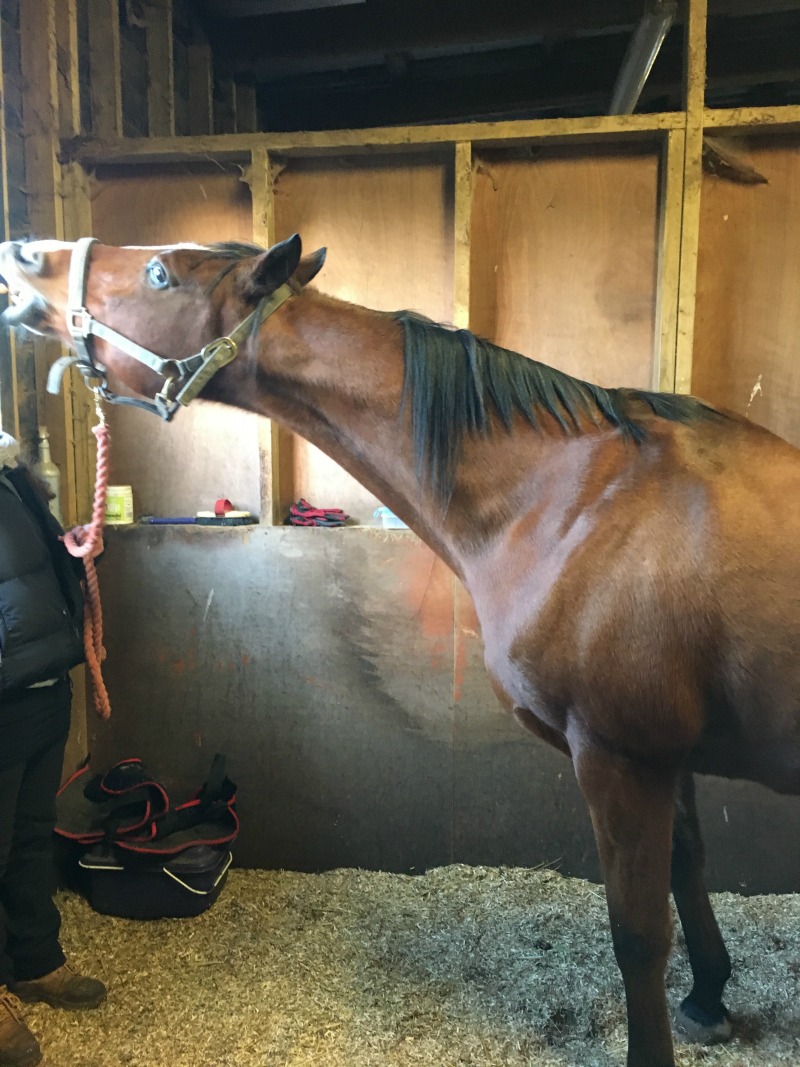
2) To Chest
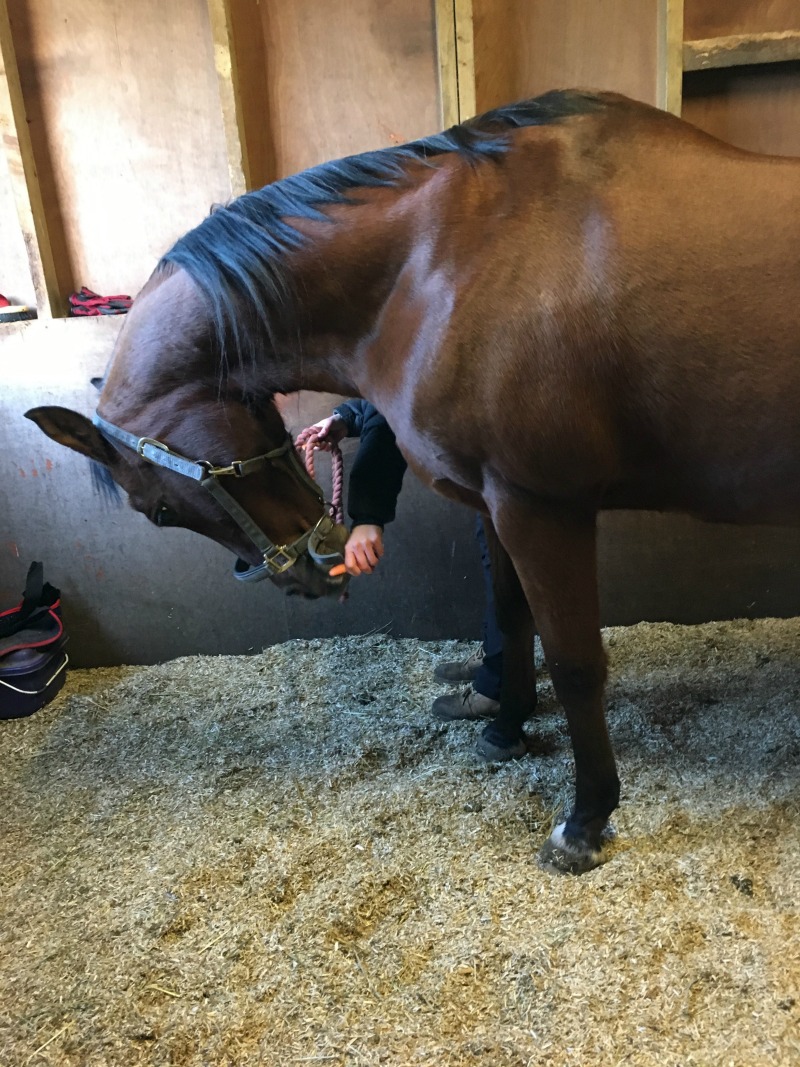
3) To Knees
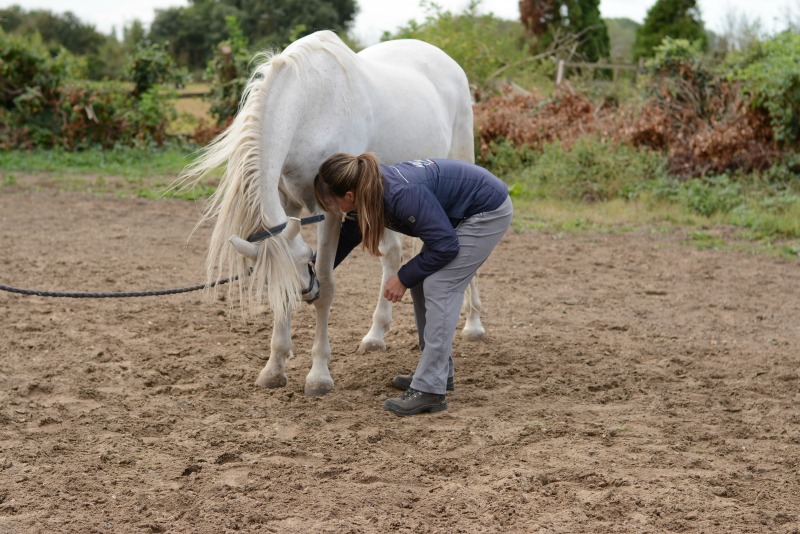
If standing as I am, on the left side, begin with the carrot in your left hand to allow your horse to smell the treat and to encourage a forward stretch. Guide your horse towards his knees and pass the carrot into your right hand behind and between your horse’s knees. As your horse becomes more adept, the carrot can be held a little lower and further back. Watch out for any knee bending as this negates the benefit of the stretch.
Lateral Bending Exercise
Dr Hilary Clayton favours the lateral stretch exercise to recruit the many muscles that round and bend the horse’s back.. Again begin with a moderate stretch and notice how, over time, your horse’s flexibility and reach improves.
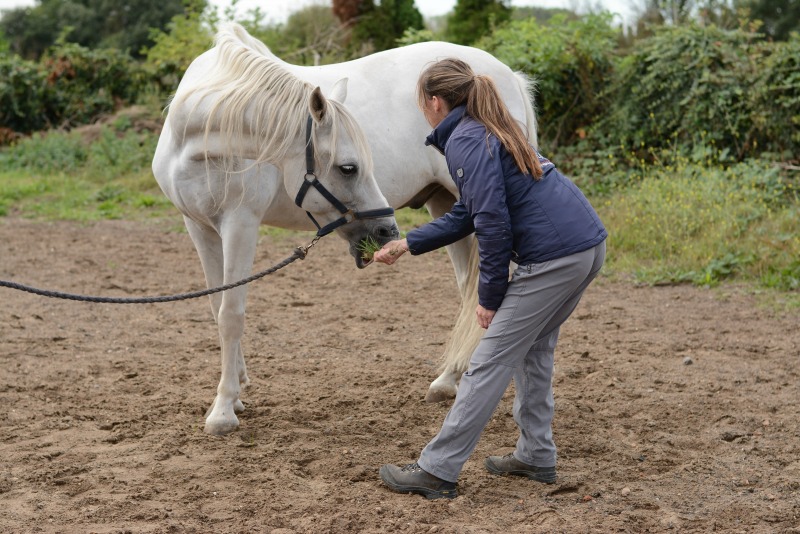
Lateral Bending exercise:
1. If your horse is unfamiliar with stretching, stand your horse square and next to the stable wall or fence to prevent sideways movement.
2. Stand a couple of feet to the side of your horse and just behind his shoulder.
3. Encourage your horse to follow the bait in a forward open arc around towards his girth.
4. Start gently and gradually encourage your horse to extend his reach backward and downward, without twisting the head and neck.
This can be repeated several times daily. Hold the stretch a little longer each time (without getting your fingers nibbled) and allow for a moment of relaxation between each effort.
Balancing Exercises
Great for improving strength and stability as a result of muscular contractions and resistance to a changing centre of gravity.
We can use the tail pull exercise to stimulate the activation of the pelvic stabiliser muscles.
Tail Pull Exercise
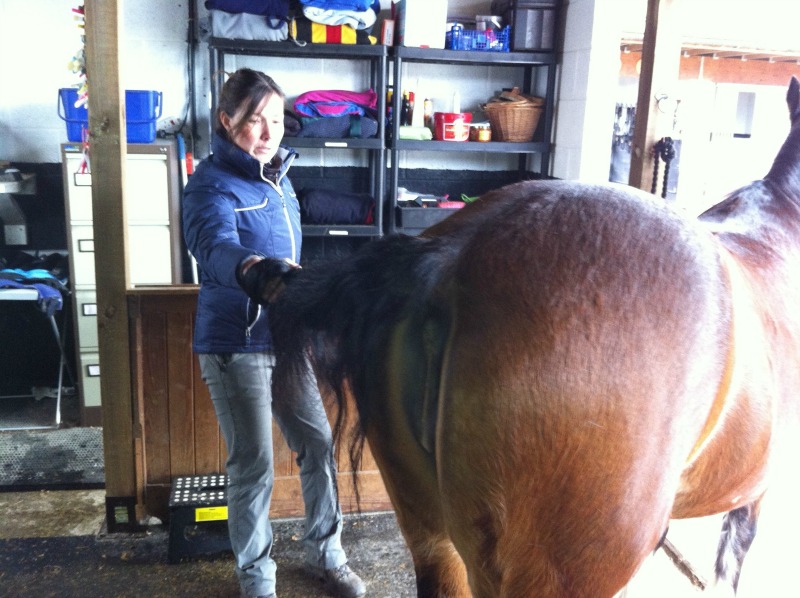
1. Stand in a safe position to one side of the haunches.
2. Take hold of the horse’s tail, and with a slightly flexed elbow gradually lean away from your horse, allowing time for him to resist and balance. Do this until you see the muscles around and above the stifle joint contract. The aim is to encourage your horse to ‘switch’ the muscles on without pulling him off balance.
The amount of repetitions and time held can be increased as your horse strengthens. I like to build up to 5 repetitions with a 30 second hold.
Core Strength Exercises
To engage your horse’s core muscles, try the Back Lifting (sternal, wither, thoracic) exercise. A great exercise to prepare your horse for ridden work and self-carriage.
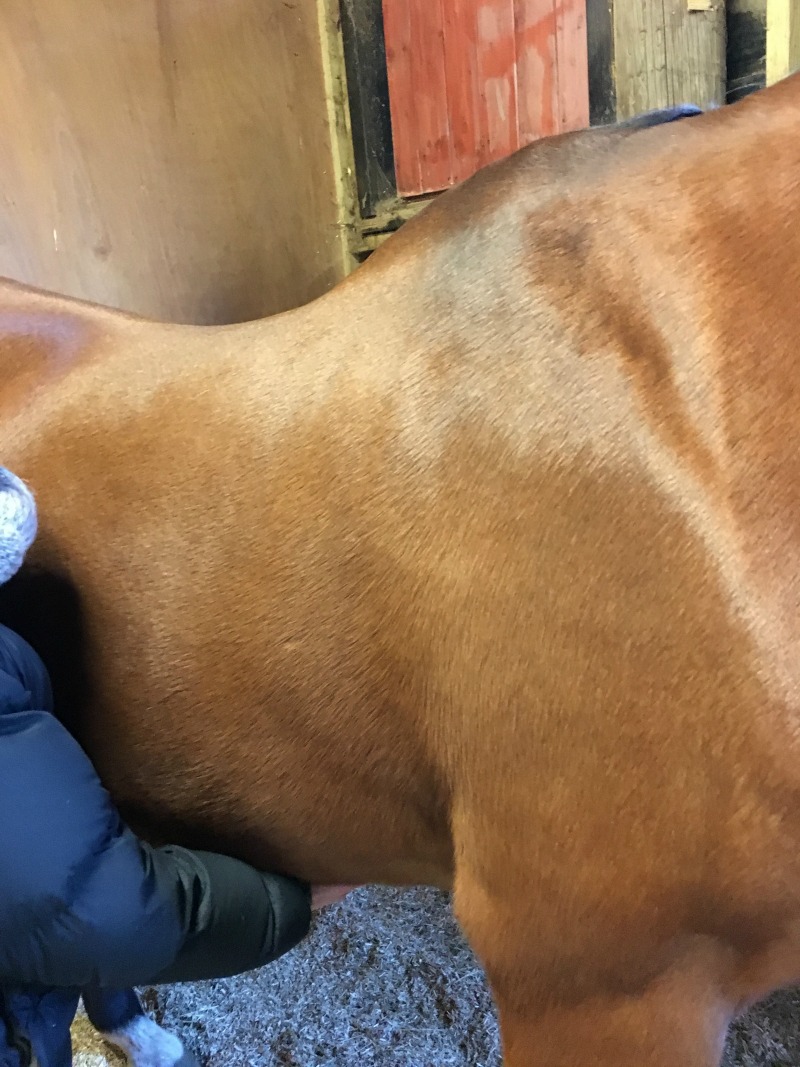
Obviously, introduce your hands carefully and if your horse objects violently and persistently, do not attempt again until you have consulted with your vet.
1. Stand behind your horse’s shoulder and place your hand on the ventral mid-line between the forelimbs.
2. With your fingertips, apply firm and consistent pressure upward – slowly move your hand along to the girth line and watch as your horse lifts through the withers.
The lifting movement can be continued through the thoracic area by moving the pressure backwards along the ventral line.
A word of warning – proceed with care, as you will need to determine your horse’s tolerance to pressure. Some people recommend the use of a blunt object such as a hoof pick. I personally DO NOT recommend this approach and strongly advise against it.
Pelvic Tilt Reflex Response
The movement opens and lifts the horse’s lumbar area to create a good gluteal stretch. Most horses enjoy the movement and do not object. Some may be very sensitive and over react as you are working with a reflex response. So do take care – you will be in a very vulnerable position!
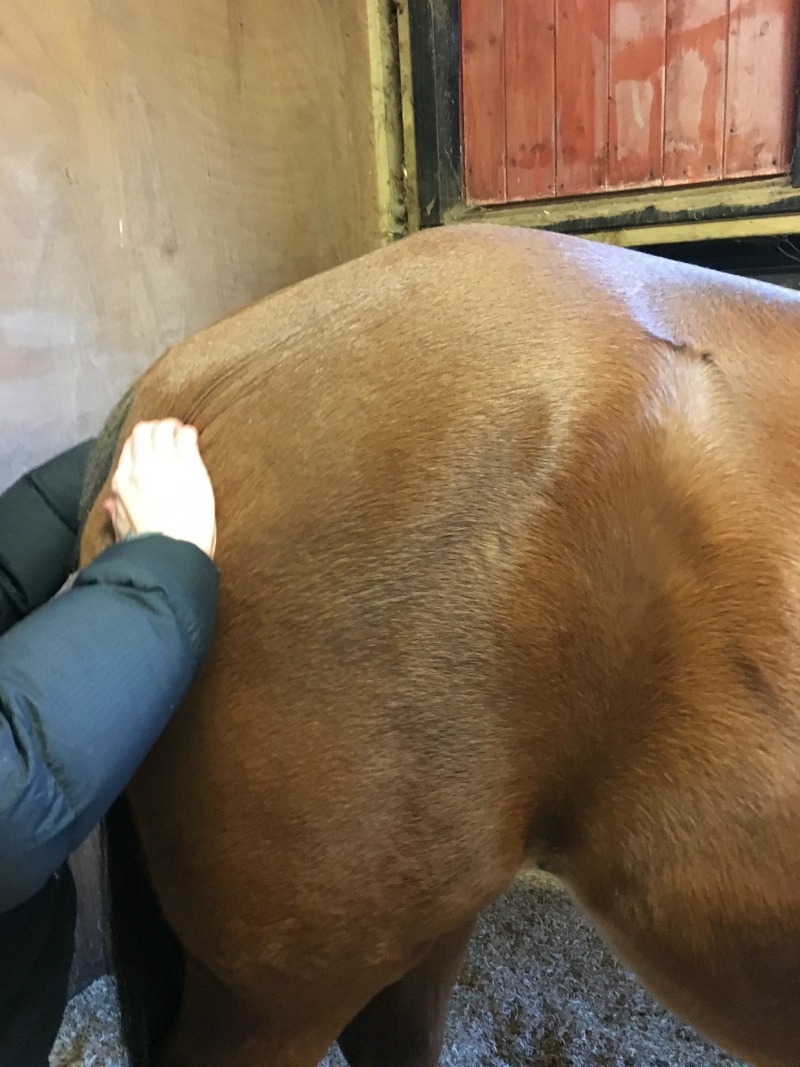
1. Place your hands around a hands width either side of and just above the top of tail. Slowly but firmly draw hands down the muscle whilst applying inward pressure, to which, your horse should react by lifting the croup and tilting the pelvis slightly.
2. Use the exercise a couple of times a week.
This exercise can be combined with the sternal/thoracic lift to further engage the core and stretch the back.
IMPORTANT!
Do remember to check with your vet before including any exercises into your horse’s maintenance/ training regime.
